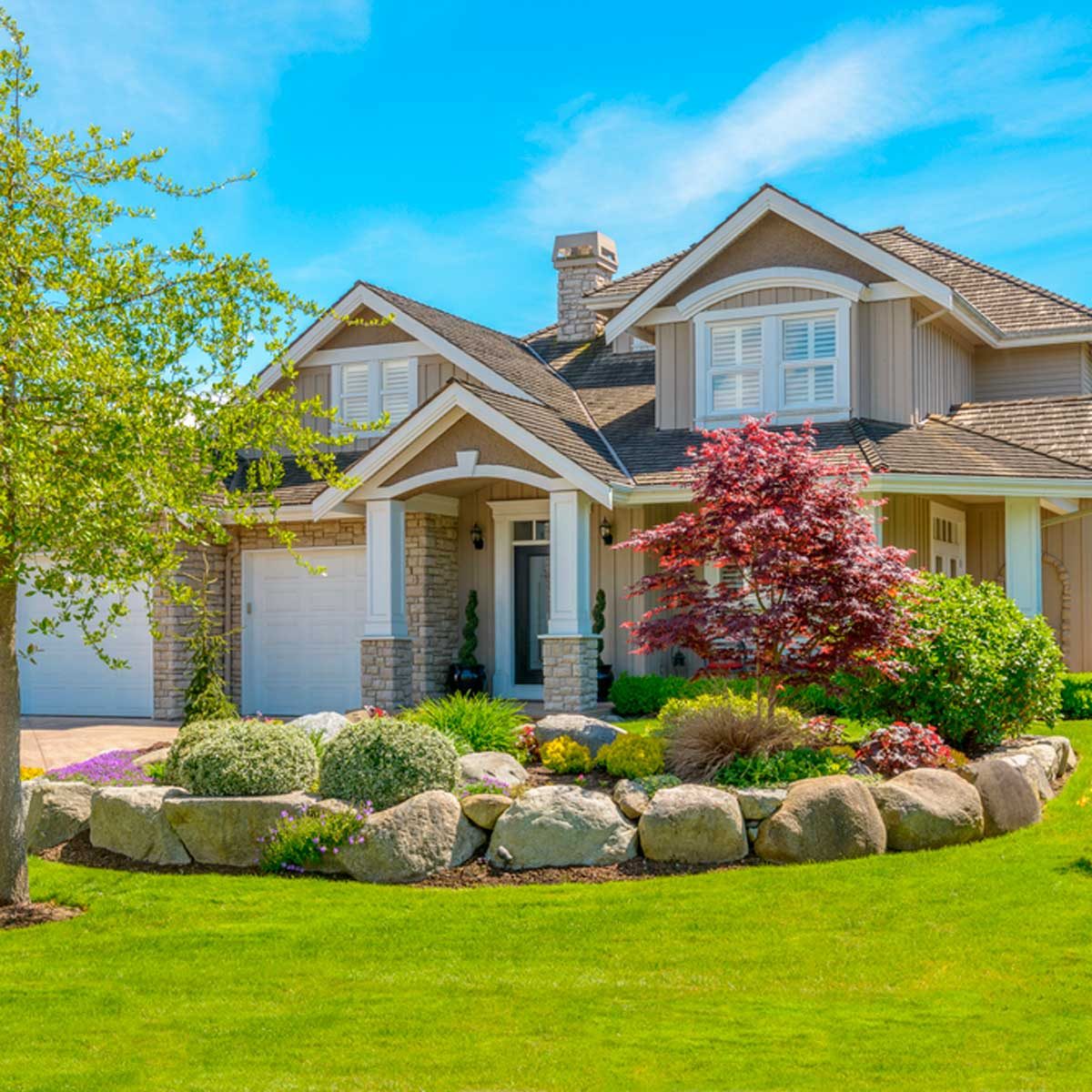Trusted Landscaping Company Jacksonville: High Quality Landscaping Solutions for Your Home
Trusted Landscaping Company Jacksonville: High Quality Landscaping Solutions for Your Home
Blog Article
Elevate Your Property's Visual With Lasting Landscaping Styles and Eco-Friendly Practices

Advantages of Lasting Landscape Design
Executing lasting landscape design methods not just saves all-natural sources yet also promotes biodiversity and enhances general environmental health. One significant advantage is the reduction of water intake with the use of drought-resistant plants, rain yards, and effective watering systems.
Furthermore, lasting landscaping can enhance soil health and wellness by minimizing using chemical fertilizers and chemicals, consequently creating a healthier atmosphere for plant development and useful dirt microorganisms. This, subsequently, enhances the total durability of the landscape to withstand environmental stressors and environment change influences - landscaping company Jacksonville. In addition, sustainable landscape design techniques can draw in varied wildlife, consisting of pollinators like butterflies and bees, promoting a more well balanced and lively community within the building
Incorporating Indigenous Plants
To build on the benefits of sustainable landscaping, a strategic concentrate on including native plants can further improve environmental resilience and advertise biodiversity within the landscape. Native plants are types that naturally occur in a certain location and have actually progressed to grow in the local climate, soil problems, and environment. By including native plants in landscape design layouts, homeowner can reduce water use, lessen the need for chemical pesticides and fertilizers, and sustain the regional wildlife populace.
Incorporating indigenous plants also helps in maintaining the distinct character and identity of a region's flora. These plants frequently require much less upkeep when developed, making them a lasting and economical landscape design service over time. Furthermore, native plants can attract indigenous pollinators like and butterflies, contributing to the overall health of the environment.
When selecting native plants for landscape design projects, it is essential to choose species that are well-suited to the details ecological problems of the site. Consulting with neighborhood nurseries or agricultural yards can offer important support on selecting the ideal indigenous plants for a certain location. By incorporating native plants right into landscaping styles, property proprietors can produce beautiful, lasting outdoor rooms that benefit both the neighborhood and the setting.

Water Conservation Methods
Efficient watering methods play a critical function in sustainable landscaping practices, guaranteeing ideal water conservation efforts in outside areas. Drip watering delivers water straight to the origins of plants, decreasing dissipation and drainage.
In enhancement to sophisticated watering techniques, xeriscaping is one more water-saving landscaping technique that concentrates on making use of drought-resistant plants, compost, and reliable irrigation to develop a low-water landscape style - bush removal Jacksonville. By choosing native plants that are well-suited to the neighborhood environment and dirt problems, homeowner can reduce the demand for excessive watering, inevitably saving water and promoting a sustainable exterior setting
Eco-Friendly Hardscaping Ideas
Enhancing outside spaces with environment-friendly hardscaping attributes can contribute substantially to lasting landscaping practices. When taking into consideration hardscaping elements, choose products like redeemed wood, recycled concrete, or natural stone to lessen environmental impact. These materials not just add a distinct aesthetic allure to your exterior area but likewise lower the requirement for brand-new resources extraction.
Executing permeable paving alternatives such as gravel or absorptive concrete can help in reducing water overflow and promote groundwater recharge. These you could check here options allow rain to leak why not try these out right into the ground, avoiding disintegration and lessening the concern on stormwater systems.
Incorporating indigenous plants into hardscaping styles can even more improve eco-friendliness by sustaining local wildlife and lowering the need for excessive watering or chemical treatments. By incorporating green wall surfaces or vertical gardens, you can introduce much more greenery right into metropolitan setups, enhancing air high quality and biodiversity.
Incorporating energy-efficient lights, such as solar-powered LEDs, into hardscaping layouts can minimize electrical power consumption and lower your home's carbon footprint. Prioritizing eco-friendly hardscaping concepts not just enhances the beauty of your outdoor room however also demonstrates a dedication to environmental stewardship.
Upkeep Tips for Sustainable Landscapes

Consistently trim plants to promote healthy growth and avoid overgrowth that can lead to pest illness or problems. Use natural plant foods to nurture the soil and plants without harmful chemicals go now that can leach into the environment.
Verdict
In conclusion, lasting landscape design techniques supply various benefits for homeowner, from boosting the visual appeal of the surroundings to promoting environmental preservation. By integrating indigenous plants, applying water preservation methods, and utilizing green hardscaping ideas, homeowner can produce lovely landscapes that are also environmentally liable. With appropriate upkeep, lasting landscapes can contribute and flourish to a much healthier environment for both humans and wildlife.
In addition, sustainable landscaping can boost soil wellness by lessening the usage of chemical fertilizers and chemicals, consequently creating a healthier atmosphere for plant development and helpful soil microorganisms.To construct upon the benefits of sustainable landscape design, a tactical focus on incorporating native plants can further enhance ecological strength and promote biodiversity within the landscape. By including native plants in landscaping layouts, building proprietors can minimize water use, minimize the requirement for chemical pesticides and fertilizers, and sustain the neighborhood wildlife population.
These plants frequently call for less upkeep when established, making them a sustainable and cost-effective landscape design service in the long run. By incorporating indigenous plants right into landscape design styles, residential or commercial property owners can create beautiful, sustainable exterior rooms that benefit both the neighborhood and the setting.
Report this page